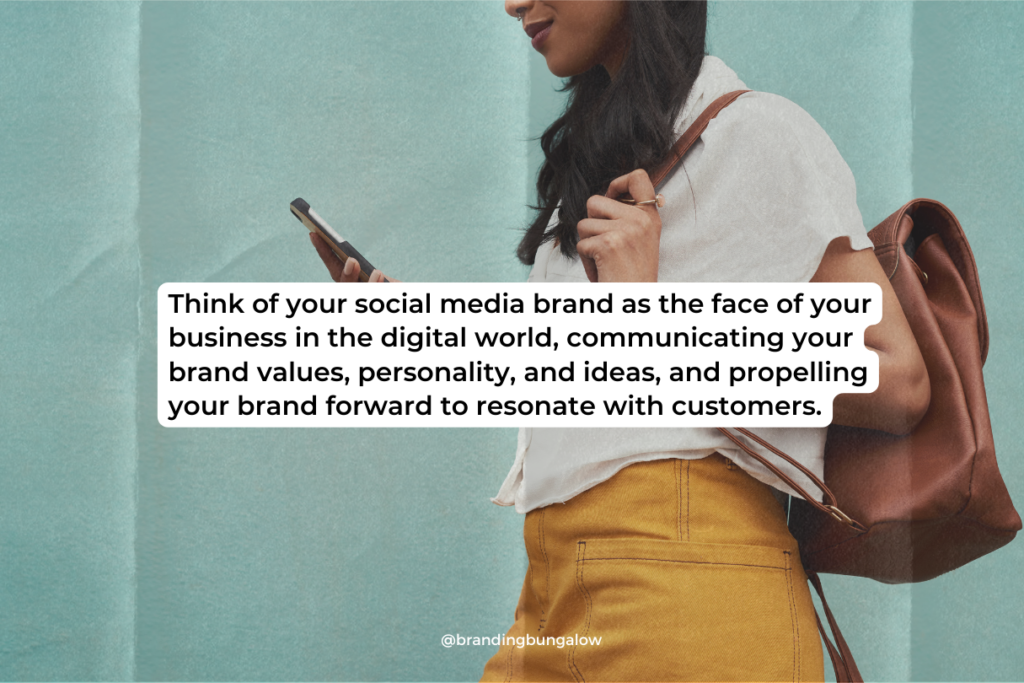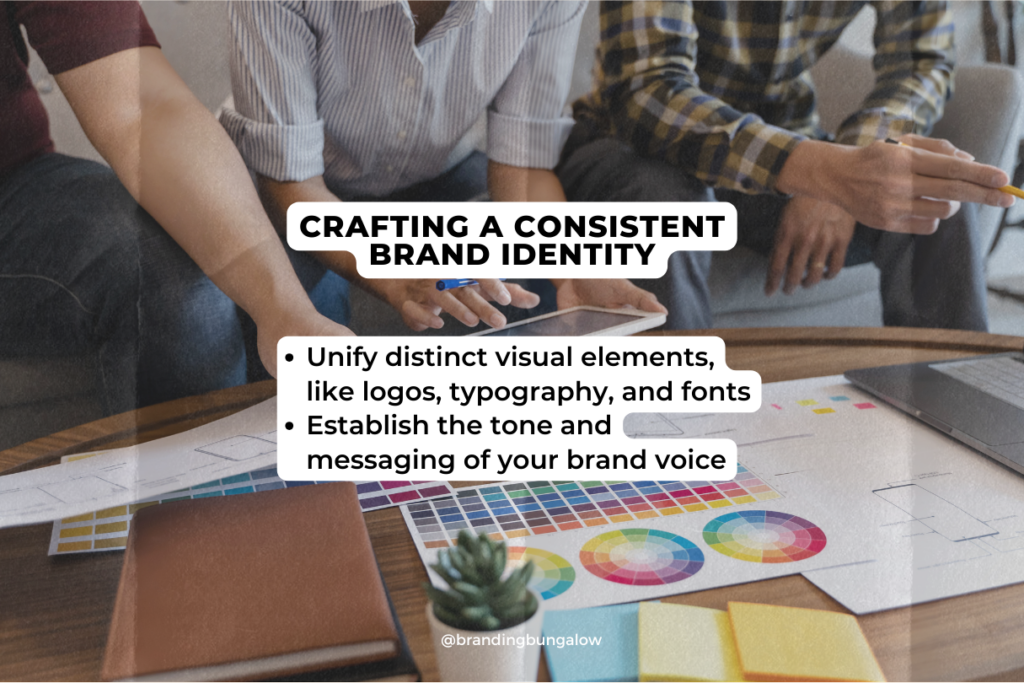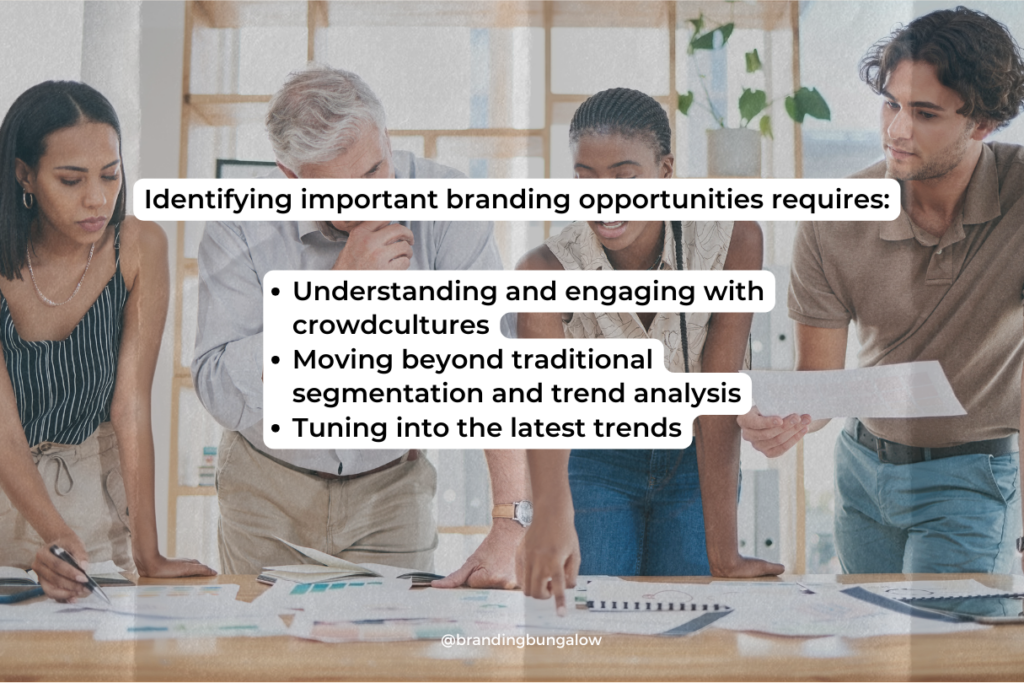Social Media Branding Tips: Elevate Your Online Presence
Struggling to make your mark in the fast-paced world of social media? Look no further—our focused branding tips for social media deliver the no-nonsense strategies you need. Learn how to craft a unique voice, construct a recognizable visual identity, and engage effectively with your online community. Start building a standout social media brand today with our concise, action-oriented guidance.
Key Takeaways
- Effective social media branding connects with audiences, raises brand recognition, drives customer loyalty, and provides platforms for social proof influencing consumer purchase decisions.
- Identifying your target audience is critical for tailoring relevant branding campaigns and content, which leads to efficient allocation of advertising budgets and choice of social media platforms.
- Developing a consistent brand identity across all social media involves harmonizing visual elements and ensuring the tone of messaging aligns with brand values, adapting to different platform nuances.
Understanding the Importance of Social Media Branding

What makes social media branding such a crucial digital marketing strategy? It’s all about connection and recognition. Social media marketing, an integral part of this strategy, helps shape brand perception, attract new customers, and foster brand loyalty. Think of your social media brand as the face of your business in the digital world. It communicates your brand values, personality, and ideas, and propels your brand forward to resonate with customers.
By leveraging effective social media branding strategies, businesses gain an identity amid a multitude of competitors on various social media networks. It elevates a brand’s presence and influence, making it stand out in a crowded market. But it’s not just about standing out; it’s about connecting and engaging in ways that support better public relations outcomes and offer diverse ways to present brand storytelling and thought leadership.
But the real power of social media branding lies in its ability to tap into the collective power of social media users through a well-crafted social media post. Social media serves as a platform for social proof, where consumer opinions, likes, shares, and comments can significantly impact others’ purchase decisions. It draws on the concept of FOMO (Fear of Missing Out), driving impulsive purchasing decisions among consumers when they see others enjoying new products or experiences. In essence, social media has changed the way consumers relate to brands and each other; they collectively judge and promote brands.
Identifying Your Target Audience
The precision of your social media branding efforts starts with identifying your target audience. Understanding who your potential customers are leads to branding campaigns that are more relevant and deeply resonate with them, helping to avoid misdirected marketing efforts. So, how do you identify your target audience?
The first step is to analyze characteristics such as:
- Demographic factors
- Shared traits
- Location
- Interests
- Behaviors
Consider existing customer interactions, market trends, and social media activity to get a comprehensive understanding of your audience. Creating personas that embody these elements can be a powerful tool to visualize your audience and tailor your social media branding strategies accordingly.
An in-depth understanding of the target audience enables the creation of targeted content and messaging that aligns with the audience’s language, tone, and preferences, ensuring that the brand voice is appealing and engaging. By clearly defining the target audience, brands can:
- Allocate advertising budgets more efficiently
- Select appropriate social media platforms
- Shape branding strategies that highlight product benefits relevant to the audience’s needs.
Crafting a Consistent Brand Identity

Crafting a consistent brand identity is like creating a memorable melody that your audience can hum along to. It involves a harmonious blend of visual elements and tone that reverberates across all your social media platforms, establishing trust and recognition among your audience.
Visual Elements
Visual elements are the notes that make up your brand’s melody. Logos, colors, and typography should be consistent across all social media platforms to ensure a unified and professional brand appearance. Just as a memorable tune sticks in your head, maintaining consistency in visual elements, such as profile pictures, cover photos, and color schemes, helps etch the brand into customers’ memory.
But it’s not just about consistency; it’s about distinctiveness too. Selecting distinctive, unique fonts for headings and the logo, paired with simpler fonts for subheadings and body text, contributes to the visual consistency and memorability of the brand. By ensuring your social media content reflects your brand guidelines, you create a unified and professional brand appearance that resonates with your audience.
Tone and Messaging
While visual elements are the notes, the tone and messaging in your social media posts are the lyrics of your brand’s melody. They convey the brand’s personality and set the mood for your audience interaction. To maintain this consistency, your brand voice should reflect your organization’s values, beliefs, and characteristics, and be consistently expressed across all social media communications.
However, while the essence of your brand voice remains the same, the way it’s expressed needs to adapt to the specific nuances of each social media platform. Consistent brand language and terminology in visual content across social media help reinforce your brand’s unique voice and identity. It’s like rearranging a song to fit different genres, always maintaining the core melody while adapting to different styles.
Choosing the Right Social Media Platforms
Choosing the right social media platforms is like choosing the right stage for your brand’s performance. It involves assessing the target audience’s preferences, business goals, and competitor activity. This strategic focus helps you focus your efforts on the platforms where your audience is most active, ensuring your social media branding efforts hit the right notes.
Consider your business goals too. Are you looking to share content, drive engagement, or offer customer support? These goals should guide your platform selection. Performing competitor analysis on social media can also inform your platform choice by showing where competitors succeed in engagement and what content resonates with the audience.
Remember, different social media networks cater to distinct content types and industries. Here are some examples of social media platforms and their corresponding social media accounts, which can also be referred to as social media channels:
- Facebook: caters to a wide demographic
- Instagram: a hub for visual content
- LinkedIn: for B2B networking and professional content
- TikTok: popular among the Gen Z demographic
It’s all about choosing the stage that best showcases your brand’s performance.
Developing a Content Strategy for Social Media Branding

Developing a content strategy for social media branding is like composing a setlist for your brand’s performance. It involves planning and organizing various content formats, such as videos, images, and text-based posts, to maintain a consistent schedule and engage with different content types. A well-crafted social media marketing strategy plays a crucial role in achieving this goal.
This requires a clear plan across your team, utilizing a content calendar to keep the publishing schedule accountable and ensure consistency in your social media presence. A/B testing content, directly engaging with polls and questions, and creating valuable content that addresses the audience’s needs can all contribute to a more engaging dialogue with your audience.
Remember, your content strategy should be guided by S.M.A.R.T. goals and an understanding of your audience’s profile and active times on each social channel. This ensures that your content is not only engaging but also effectively tailored to maximize engagement.
Engaging with Your Audience

Engaging with your audience is like playing a live show. It’s an opportunity to connect directly with your fans, build a loyal community around your brand, and encourage further interaction. This involves responding to comments, messages, and queries promptly, which can lead to better sales conversions and increased customer satisfaction.
User-generated content, such as shared product experiences, reinforces brand authenticity and can drive potential buyers to make purchasing decisions. You can also leverage influencer partnerships to amplify your brand message and potentially lead to a significant return on investment.
Remember to maintain a regular interaction to keep your audience’s attention. This includes engaging with all types of comments, positive or negative, and utilizing engagement strategies like giveaways and challenges to create excitement around your brand and encourage further audience interaction.
Utilizing Analytics and Adjusting Your Strategy
Like a maestro studying the orchestra, utilizing analytics and adjusting your social media branding strategy based on key metrics and audience feedback is crucial for enhancing brand resonance and business growth. Identifying key metrics like overall engagement rate and audience comments can help track the effectiveness of your social media branding efforts.
Tools like Google Analytics and social listening can help track brand mentions and analyze competitor strategies, providing the data needed to adjust social media strategies in real time. Engaging with and analyzing the audience’s interaction with content, as well as sentiment analysis, helps determine what messaging resonates and can lead to strategy refinement.
To enhance brand resonance and business growth, it’s vital to:
- Conduct regular analysis of social media metrics
- Create monthly reports to track changes
- Focus on improving strategies based on this continuous feedback loop.
Leveraging Trends and Emerging Platforms

Leveraging trends and emerging platforms is like catching the wave of the latest music trends. It allows brands to:
- Connect with younger demographics
- Take advantage of new content formats like short-form video
- Engage with crowdcultures on emerging social media platforms
- Bring isolated communities together
- Produce original content
- Become more influential
Traditional branding techniques have become less effective in the social media age, necessitating alternative strategies to engage digitally clustered audiences. By aligning with the values and concerns of crowdcultures, brands like Chipotle and Dove have distinguished themselves through cultural branding on social media.
Identifying important branding opportunities requires:
- Understanding and engaging with crowdcultures
- Moving beyond traditional segmentation and trend analysis
- Tuning into the latest trends and making sure your brand is playing the right tune.
Top 5 Social Media Branding Mistakes to Avoid
While mastering social media branding can be a game-changer, it’s equally important to be aware of the pitfalls. Here are the top 5 social media branding mistakes to avoid:
- Inconsistent messaging: Always maintain brand consistency in your social media posts to avoid confusing your audience.
- Overposting: Balance your content posting frequency to keep your audience engaged without overwhelming them.
- Impersonal autoresponders: Engage with customers personally on social media to foster a positive brand perception.
- Over-reliance on automation: While automation can be a great tool, avoid over-reliance on it, as it can lead to embarrassing mistakes like the New England Patriots’ Twitter incident.
- Ignoring brand image: Always consider the impact on your brand image and provide value to followers when sharing stories and content.
Summary
Navigating the world of social media branding may seem daunting, but with the right strategies in place, it can be a rewarding journey. From understanding the importance of social media branding, identifying your target audience, crafting a consistent brand identity, to choosing the right platforms, developing a content strategy, engaging with your audience, utilizing analytics, leveraging trends and avoiding common mistakes – it’s all about striking the right chord with your audience.
So, whether you’re just starting out or looking to fine-tune your social media branding strategy, remember this – social media branding is not just about being seen; it’s about being remembered. It’s about creating a compelling brand persona that resonates with your audience and leaves a lasting impression.
Frequently Asked Questions
What are the top 5 social media platforms for branding?
The top 5 social media platforms for branding are Facebook, Instagram, YouTube, LinkedIn, and X, which provide real-time updates. Consider leveraging these platforms for your brand’s social media marketing strategy.
How do I get my brand noticed on social media?
To get your brand noticed on social media, use a combination of paid marketing and organic growth, such as social ads or boosted posts, which typically make up about 14% to 15% of marketing budgets.
Why is social media branding important?
Social media branding is important because it shapes brand perception, attracts new customers, and builds brand loyalty, giving businesses a distinct identity and elevating their presence and influence.
How can I identify my target audience for effective social media branding?
To identify your target audience for effective social media branding, analyze demographic factors, shared traits, location, interests, and behaviors. Consider existing customer interactions, market trends, and social media activity. This will help you tailor your branding efforts to reach the right audience and achieve better results.
How can I engage with my audience on social media?
To engage with your audience on social media, make sure to respond promptly to comments and messages, maintain a dialogue, encourage user-generated content, and consider partnering with influencers for brand message amplification.
Recent Blog Entries
Discounts to Dubsado CRM, Helcim Payment Processing and...
Brand audits can save your business' sinking marketing ship.
What's happening to Coke and what you can learn from it.
Shop Products
Create a personalize brand board by taking elements from our 3 signature brand board templates.